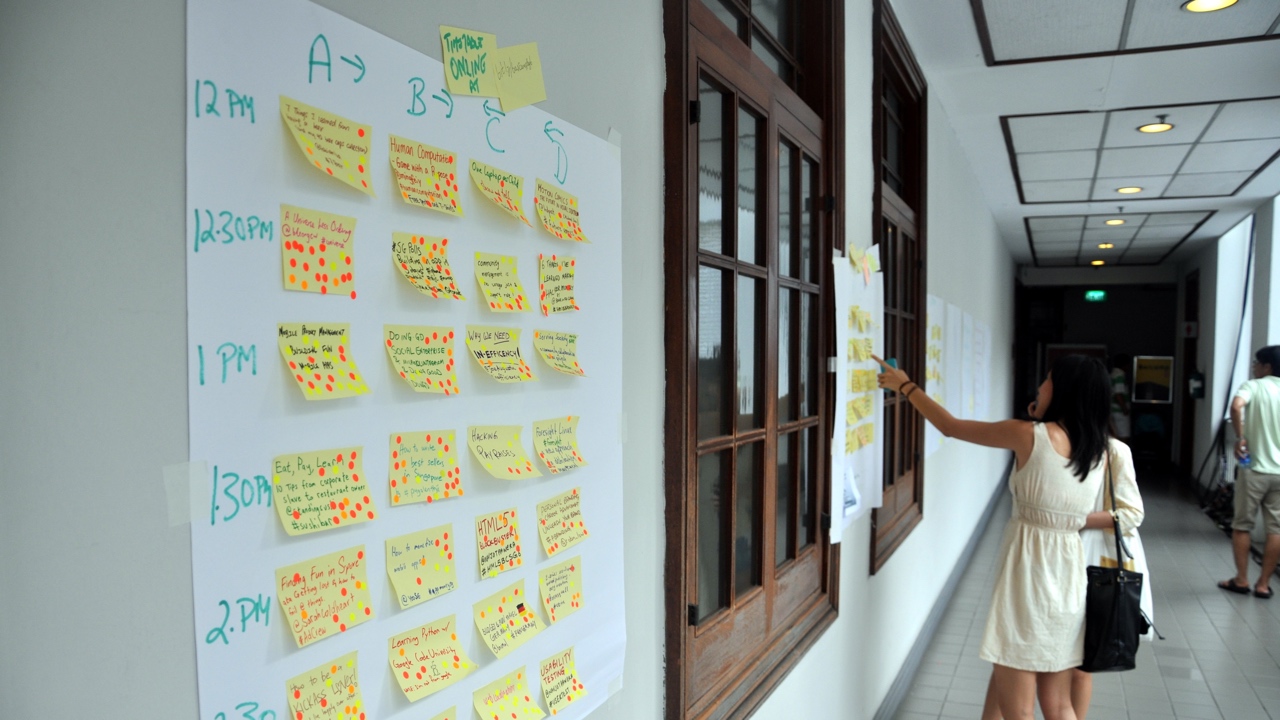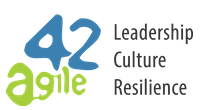How to get your conference submissions accepted
I have been part of either reviewing or organising multiple conferences, both locally and internationally. I am grateful for this because it helped me to learn about how to create a submission that has a better chance of getting accepted. During my reviewing for the AgileXX conferences I had the opportunity to pair with some experienced reviewers and agilists, which also helped me to grow and learn.
I’m going to share what I have gained from the experience, and hopefully, it can help others out there…

This is what I look for when I’m reviewing a submissions:
- It’s new.
It adds something that hasn’t been done or thought of before, or it combines things from different fields or thinks about things in a new way. - There is a takeaway.
I feel that people will have great takeaways from it - It’s inspirational!
When I read it, I think, “wow, I want to go to that.” - Real life experience.
The submission shows there is real life experience behind it, not just reading. - It is well written and to the point.
A well-written submission with zero buzzwords and enough information for me. - It shows confidence.
I am confident that the submitter can deliver from a speaking or facilitation perspective.
Out of this list, the most important to me is the submission is well written and to the point. A great submission is well written, has zero buzzwords and has just the right information for me. Getting this right is key to getting your submissions accepted. Here are my pointers for getting it just right!
Tips for writing your submission
Short & Sweet: The Title
Your title needs to be interesting. Let it say something about your talk. Don’t make it too long unless that is an intentional learning point in your submission. Often people will decide where to go based on the title, and I can’t tell you how many times I’ve seen terrible or boring titles. As a reviewer, you often don’t want to read any further.
Punchy: The Abstract
Your abstract needs to be short and punchy. The abstract or summary is the part that goes on the program, so it needs enough information, that people know what they are getting and are excited about it. But not so much that they get bored and stop reading. Reviewers and conference participants are also not always looking for the same thing, so if you completely optimise for one, you might lose the other.
Not many people decide before a conference where to go, so the abstract is often the thing that helps them decide. If your abstract is too long, people get bored and stop reading. If your abstract is like a bad movie trailer and contains all the best bits from your talk, then people will be disappointed, because they got as much out of your talk as they did reading the abstract.
So think about a good movie trailer, an original abstract highlights the good bits, but makes sure that the meat will be in the talk itself. As a contrast, an abstract with loads of buzzwords and that looks like a sales pitch either for the submitter themselves or for something that they have developed or a book they have written, can turn a reviewer off very quickly. A good tip is to approach the abstract as if you were writing a tweet, write and rewrite until you get the key message under the (self-imposed) limit.
Sell it: Information for the program team
In this section you have the opportunity to sell your talk to the decisionmakers: the review committee. Here is where you want to be clear about what your talk or workshop is going to be about. If you have hinted at new models or exciting new thinking in your abstract, be clear about what that looks like here. If you aren’t, there is no way for the program committee to know what you will be talking about. Be clear about how your session looks. People from the program team want to know this for workshops and talks. We want to know that you have thought about this deeply and that you know how you are going to spend the time. If you are proposing a workshop, we want to know that you have thought about how to scale it. Have you thought about what it will look like for 20 people vs. 50 people vs. 100 people or even 200 people?
Let us know in detail how you will spend the time. A great submission lays out in detail how the 45 mins / 90 mins / 60 mins / 2 hours etc. will be used. If I can see that, then I know you have thought about what you are going to do. If I can picture your session in my head, either talk or workshop, and I think to myself, “Wow, I want to go to that!”, then I will rate your talk highly – and chances are, so will others.
If you are doing an experience report, here is where you highlight to the program committee the things that people will learn or take away from your talk. Here is where you explain at a high level, why your story is better than the next guys.

The don’ts
A few things frustrate me when I’m reviewing, especially when it’s late and I’m tired. So here are some don’ts:
Don’t send links
Please do not send me to your blog or your book. I don’t have time to read your submission plus 50 blog posts on the topic, I have 100 other submissions to go through, and I just want to go to bed. If you can not get your ideas across succinctly in your submission, you will get a poor rating.
Don’t give a breakdown with no detail
What I am looking for in the breakdown is what your talk/ workshop looks like. I recieved the below breakdown recently and that doesn’t cut it. Show me what your talk or workshop looks like not what a generic structure could look like. A structure this limited, just shows me you haven’t thought about it at all.
– Intro and topic setup (10 min)
– Body of topic (20 min)
– Learning recap (5 min)
– Q&A (10 min)
Don’t tell me how awesome you are
Nothing is more frustrating than a submission that is filled with details about how fantastic the speaker is and that they just published their new book/blog/podcast…. With little or no information for me about what they are actually going to talk about, (since I haven’t read their book) and what the audience will get out of it.
You need to make an impression.
As an organiser, you are often doing this voluntarily. Meaning, you have to make time in your spare time to go through hundreds of submissions for a big conference or between sixty and a hundred for a smaller conference.
Often there are 80 – 100 submissions for maybe 25 slots. At the bigger conferences there are upwards of 200 submissions for every 20 – 25 slots available. These are the numbers, and your submission is just one of many.
Even if you have all the right detail and a great submission, most conferences will have a team of people reviewing and so there are many people you need to impress. Even if you manage to impress many people, if someone else has a similar topic or a better submission, then you are out. And if there are more submissions with new and exciting things again you will be out. Remember you need to stand out from the 100 other submissions that are vying for the 25 slots on a program, make yours the one that all the reviewers say “Wow, I want to go to that!” There is nothing more disappointing or frustrating for a reviewer than a great title or idea, and the rest you can see took only 5 minutes to write.
You aren’t going to be successful every time, but keep going and the better you get, the better your chances will be.
Timing is everything.
More than 50% of the submissions come through on the last day that the system is open. From there, reviewers often don’t have much time to get through all of them or as many as possible so that each submission is seen by at least 3 or 4 people.
If yours comes through on the last day and is number 65 of 80 or number 45 of 50 or something like that, then chances are most people have reviewed that many already today and are grumpy with the crap submissions and probably tired. Unless yours is a “shoot the lights out” submission, it’s going to get a crap rating at that point.
One final tip.
If you submit to the AgileXX conferences and if you submit early, you can ask for help, and there will be a team of people ready to help you improve your submission. Submitting in this way is probably one of the best ways to learn!
I hope these tips help you to write a great submission. If you have other tips to share, I would love to see them in the comments!

